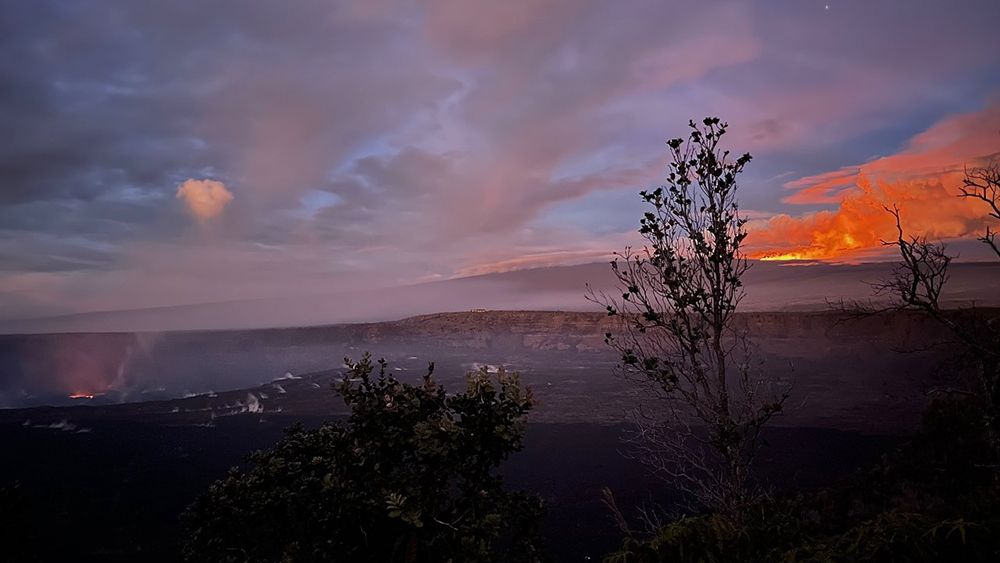As scientists and government agencies keep an eye on the eruption that began Sunday night, the latest report released Monday from the Hawaiian Volcano Observatory states the eruption at Mauna Loa had migrated from the summit to the Northeast Rift Zone, where fissures were feeding several lava flows. Because of this migration, HVO scientists have indicated to county officials there is no imminent threat to the community at this time, according to a county news release.
“Our team is on full alert and is prepared to respond to whatever situation may arise as a result of the Mauna Loa eruption,” said Hawaii Island Mayor Mitch Roth. “That said, we’ve been told that the lava is heading in the best possible direction, which is away from our communities. We’ll continue to monitor the situation and will be providing updates to the community regularly.”
In response to visitor concerns regarding travel plans to Hawaii Island and the state in general, the Hawaii Tourism Authority responded in a news release that there was no need to change travel plans to the state or the island. Hawaii Island is the southernmost island, and Kauai, Oahu, Maui, Molokai and Lanai are unaffected by the eruption. The most that neighboring islands may experience is vog, or volcanic smog, depending on wind direction. For residents in the immediate area, volcanic gas, fine ash and Pele’s hair (long, fragile glass fibers formed by gas) are a possibility.
The USGS explains vog as a mixture of sulfur dioxide and other gases from a volcanic eruption chemically interacting with sunlight, oxygen, moisture and dust. It poses a health risk for those who suffer from asthma, emphysema, COPD or other types of breathing problems. Such individuals are urged to wear masks or remain indoors with the windows closed. On a positive note, vog can create stunning sunsets. Information on vog and its impacts is available at the Hawaii Interagency Vog Information Dashboard.
Though the Volcano Alert Level is at a warning level and Aviation Color Code is red — which means a hazardous eruption is imminent, underway or suspected — Hawaii Island’s two airports in Hilo and Kona remain open. As a caution, HTA suggests visitors check with airlines for flight status, although the eruption isn’t expected to affect scheduled flights.
HTA advises visitors staying in vacation rentals to contact their hosts for more information. The major resort areas of Kailua-Kona, Kohala Coast and Hilo are not immediately downslope of the eruption.
Hawaii Volcanoes National Park remains open as well, though there are road closures. According to park officials, the new eruption is the first for Mauna Loa since 1984, and they expect an influx of visitors to the park. The lucky ones will see a rare dual eruption from both Kilauea and Mauna Loa volcanoes, according to a park news release.
“Hawaii Volcanoes National Park is keeping close watch on Mauna Loa in tandem with our colleagues at USGS and Hawaii County Civil Defense,” said Hawaii Volcanoes National Park Superintendent Rhonda Loh. “The park is currently open, but visitors should be prepared and stay informed.” Loh advises visitors to check the park website for closure updates, safety alerts and air quality.
It’s unclear how long the eruption will last or what the volume of output will be, according to the county. No mandatory evacuations have been called or are imminent. Shelters were opened at the Robert Herkes Gymnasium in Pahala and Old Airport Gymnasium (Kailua Park) in Kailua-Kona, amid reports of self-evacuations late Sunday and early Monday.
Official channels for the latest information and eruption updates are the Hawaiian Volcano Observatory, Hawaii Emergency Management Agency and County of Hawaii Civil Defense.
Sarah Yamanaka covers events, environmental and community news for Spectrum News Hawaii. She can be reached at sarah.yamanaka@charter.com.




